Why Ptosis Surgery is Essential for Aging Eyelids
2025-08-15
Many people visit a plastic surgeon to address sagging upper eyelids, hoping for a simple eyelid lift.
However, they are often surprised when "ptosis correction" is also recommended, leading to confusion.
In this article, we will explain what lazy eyelid is, why it's often necessary to combine ptosis surgery with an upper blepharoplasty for middle-aged patients, and share real surgical cases to illustrate the results.
The Real Reason for Lazy eyelid in Middle Age: Ptosis
Lazy eyelid is the condition term for a droopy eyelid, where the eyelid itself sits lower than normal, covering a significant portion of the pupil. It creates a "sleepy" or tired appearance and is a common symptom that develops with age.
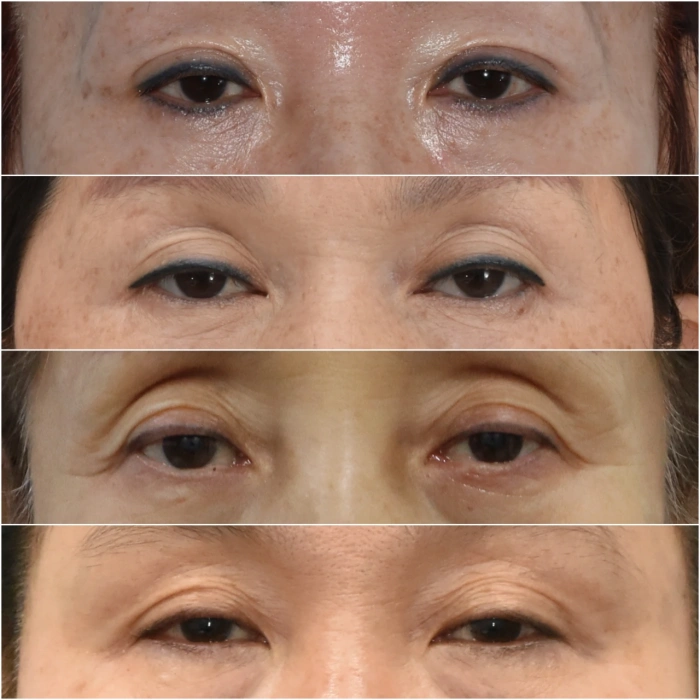
- The Main Cause of Acquired Ptosis: The primary cause is the aging process. The connection between the muscle that lifts the eyelid (levator palpebrae superioris) and the eyelid structure (tarsal plate) weakens and stretches over time.
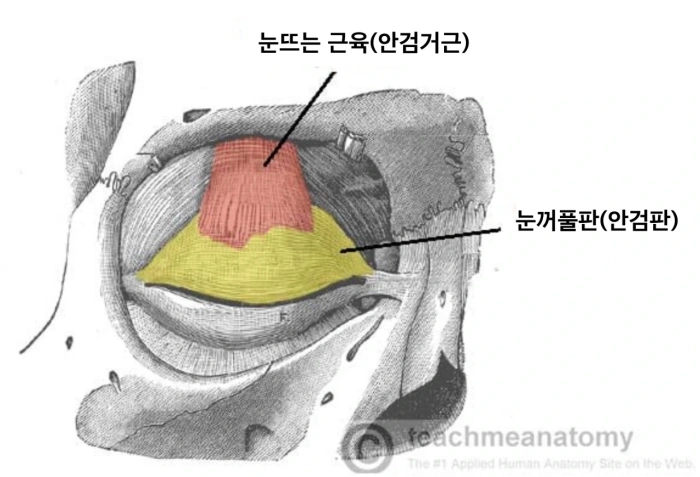

In the diagram above, the levator muscle (blue) pulls on the tarsal plate (red) to open the eye. As we age, the connection between them (indicated by the green highlight) becomes loose. When this happens, the power from the muscle isn't fully transferred to the eyelid, resulting in a droopy, sleepy eye.
How Ptosis Correction (Eyelid Correction) Works
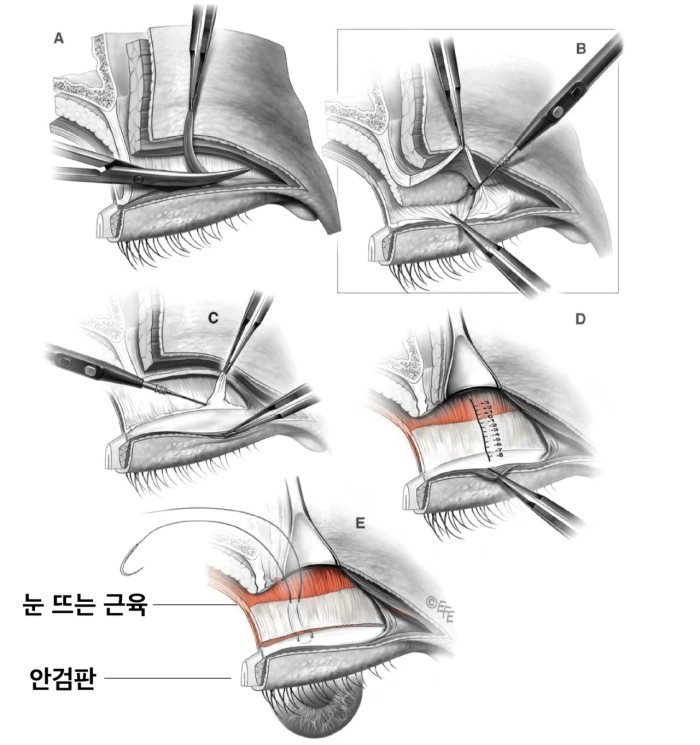
Ptosis surgery aims to fix this "sleepy eye." The procedure involves tightening the weakened levator muscle or reattaching it more securely to the eyelid.
- Plication Method: The levator muscle is folded and sutured to shorten and strengthen it.
- Advancement Method: The muscle is detached, advanced forward, and reattached to the tarsal plate.
(The video below is intended for medical education. Viewer discretion is advised.) [Link to Ptosis Surgery Educational Video]
This surgery is performed through the same incision as an upper blepharoplasty (eyelid lift) or double eyelid surgery, so it can be done at the same time without additional scarring.
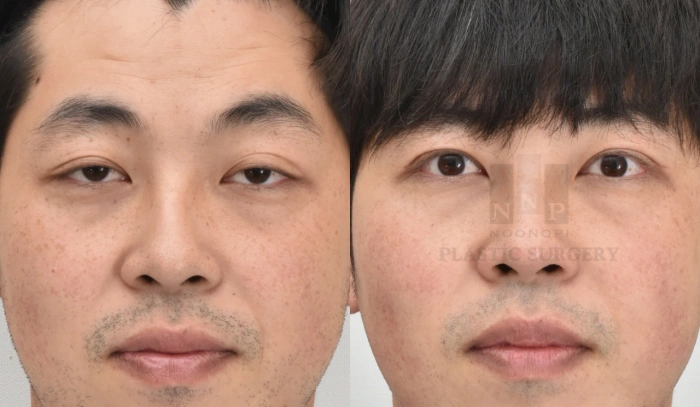
Real Patient Case Studies
Case 1: A Patient Using Their Forehead to Open Their Eyes
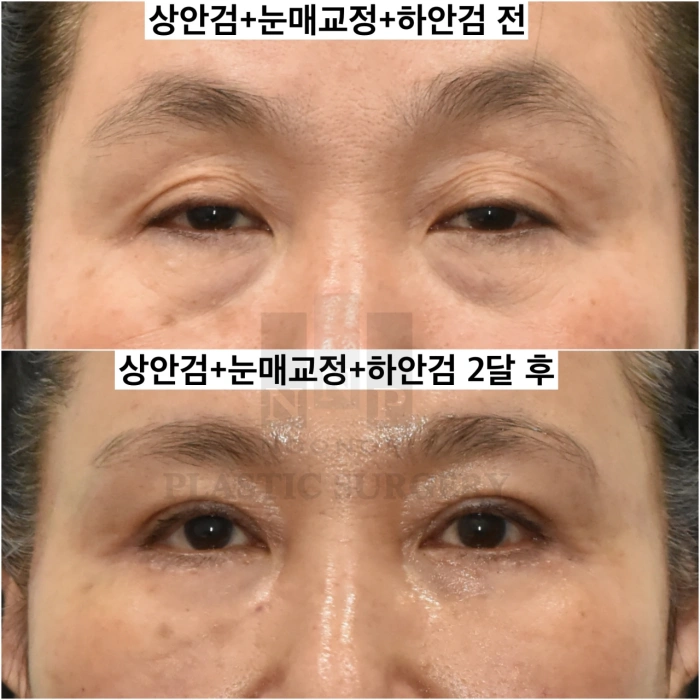
This patient had a strong habit of using their forehead muscles to lift their heavy eyelids. After surgery, the eyes open effortlessly, allowing the forehead and brows to relax for a more natural and peaceful expression.
Case 2: Sunken Eyes with a High Crease
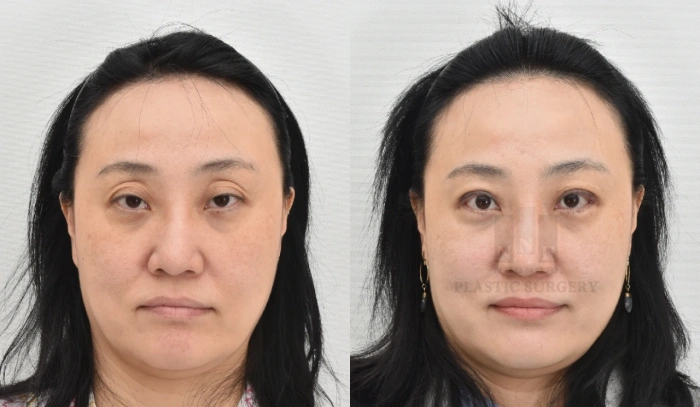
High folds, sunken upper lids, and lazy eyelids are classic three signs of senile ptosis. Correcting ptosis revitalized the eyes, while the eyelid crease was lowered to a more natural and youthful position.
Case 3: Revision Upper Blepharoplasty
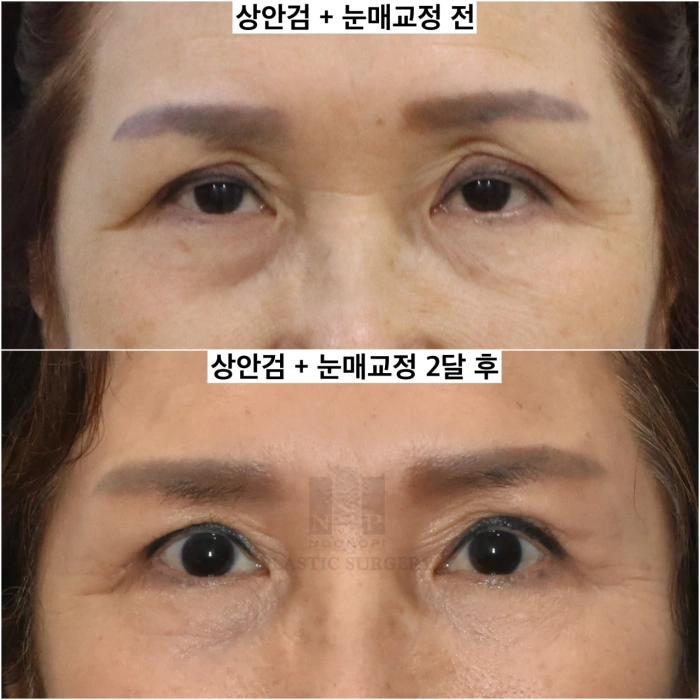
This patient's previous surgery resulted in an unnatural, "kinked" eyelid line. Revision surgery corrected the crease shape, while ptosis correction created a clear and defined eye shape.
Case 4: Severe "Sleepy Eye" Improvement

This patient is the sister of the patient from Case 3 and decided to have surgery after seeing her sister's great results. She presented with the classic "symptom triad" of levator muscle disinsertion: a high eyelid fold, a sleepy eye (ptosis), and hollowed eyelids.
A natural, comfortable eye shape was achieved with a lower crease design that avoided excessive skin removal.
Case 5: Improving Sleepy and Tattooed Eyelids
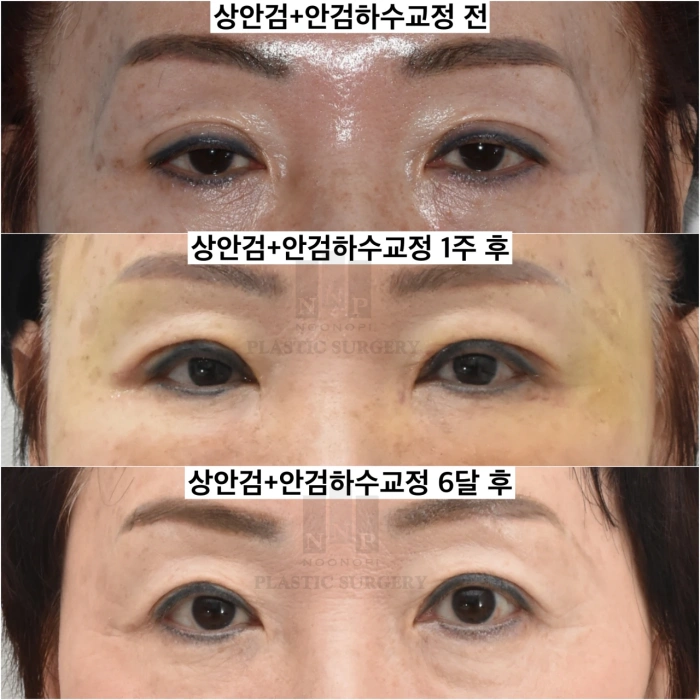
This patient underwent an upper blepharoplasty with ptosis correction. The hollowness in her temples was also treated with fat grafting.
Case 6: Ptosis Correction Combined with a Brow Lift

This patient had severe ptosis and a very strong habit of using their forehead to lift the brow. The before-and-after comparison shows a dramatic improvement in forehead wrinkles and relaxed eyebrows, as the eyes no longer rely on the forehead muscles to open.
However, surgery cannot erase all the habits. A residual habit of raising the right eyebrow remains. This can be improved with Botox®.
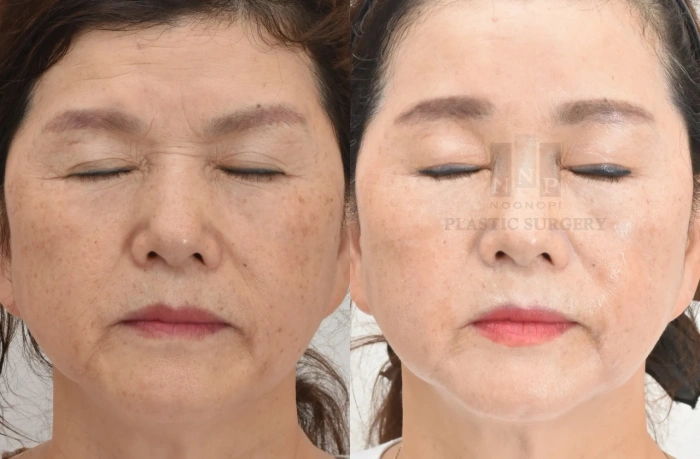
As this case shows, even if the eyebrows are perfectly symmetrical during surgery, a strong, habitual use of the forehead can lead to lingering asymmetry.
Risks and Important Considerations for Ptosis Surgery
Ptosis correction is one of the most challenging and unpredictable eyelid surgeries.

While we can perform tests to predict the surgical outcome, many variables—such as patient cooperation during surgery, swelling, dominant eye, and Hering's Law (where fixing one droopy eye can cause the other to droop)—can affect the result. The decision for surgery should be made carefully, with the understanding that early adjustments may sometimes be necessary.
👉Learn more about ptosis correction

It's also important to be patient. Judging the results prematurely before the final swelling subsides (which can take up to 6 months) can lead to unnecessary anxiety.
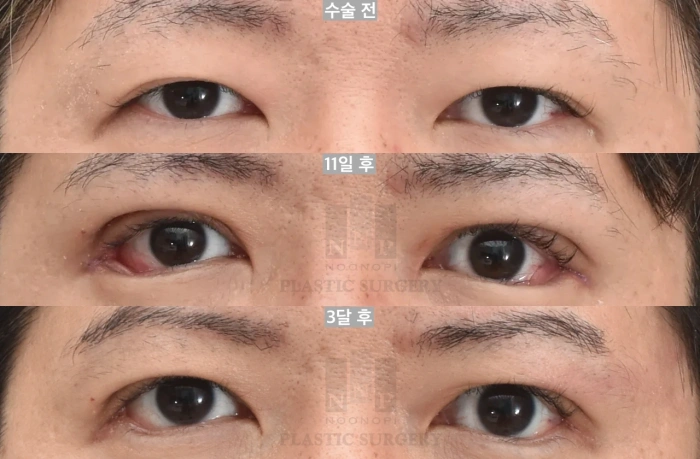
Conclusion
If you are concerned about sagging upper eyelids, it's highly beneficial to consider ptosis correction along with an upper blepharoplasty.
Performing both surgeries at the same time creates a more natural, alert, and aesthetically pleasing result by addressing both the excess skin and the underlying muscle weakness.
The right diagnosis and a customized surgical plan should be determined through a thorough consultation with a board-certified plastic surgeon in Korea.
If you have any questions, please feel free to contact us via 🔗WhatsApp for a consultation!

